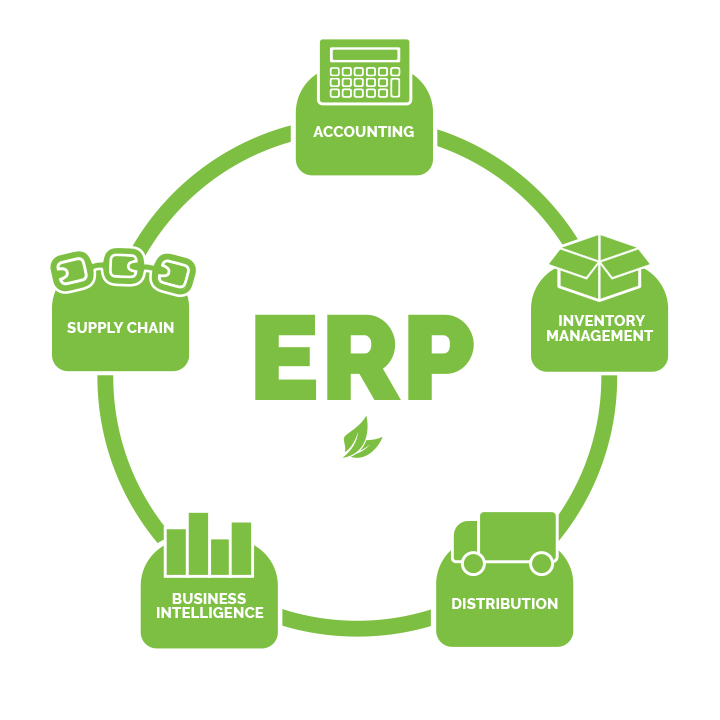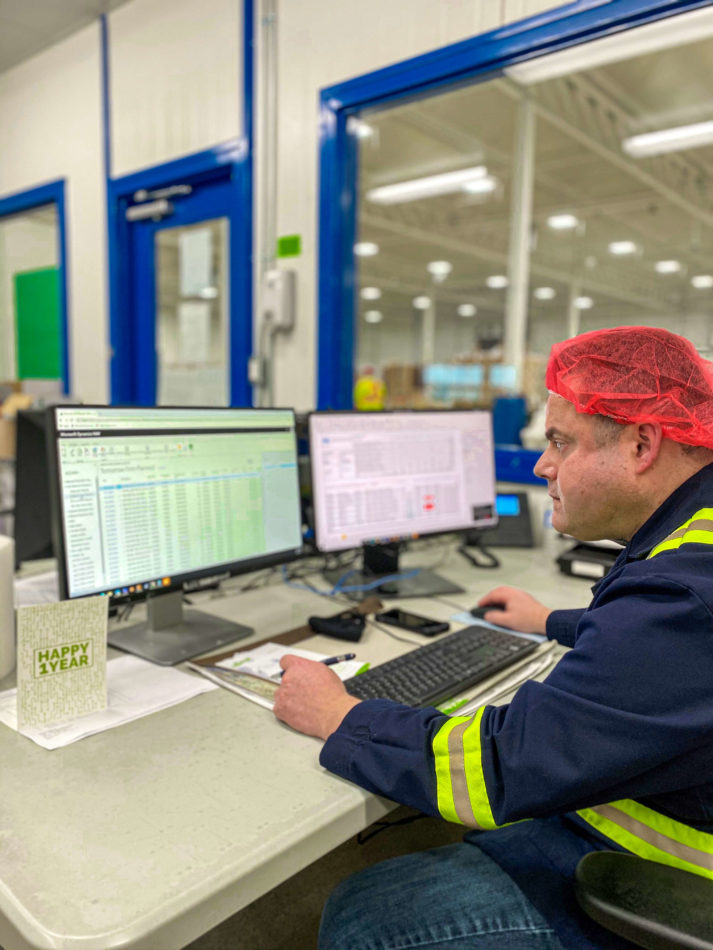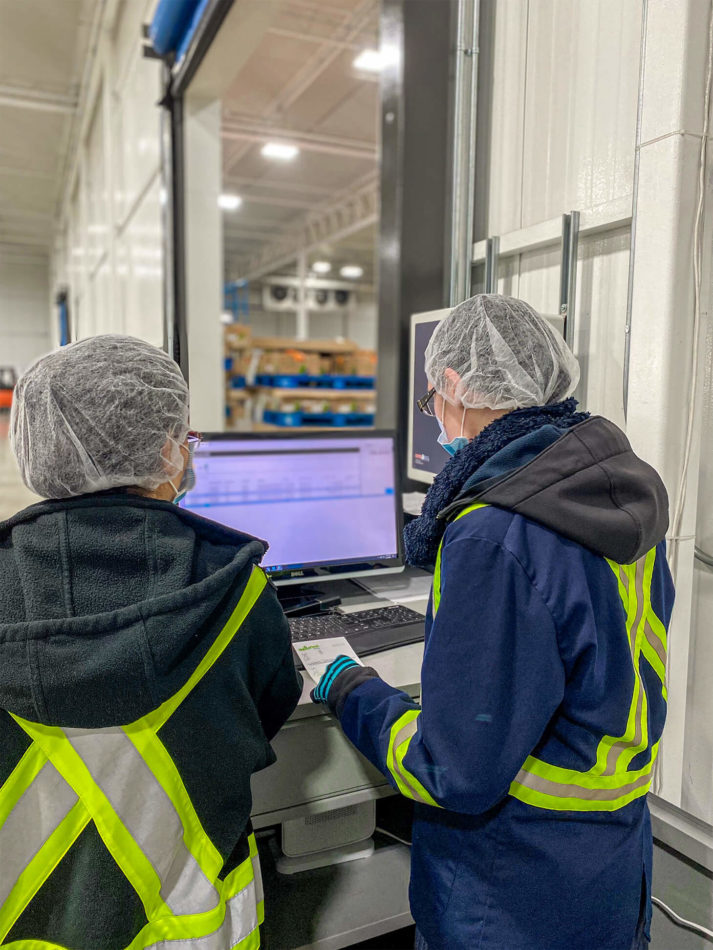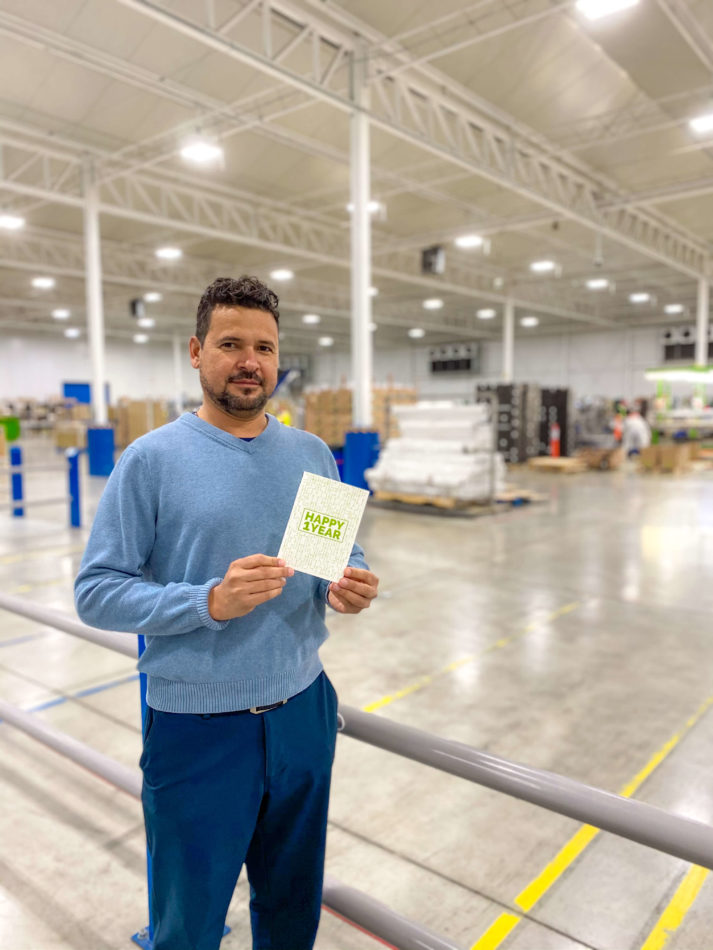What is ERP?
For a large company to successfully grow, it is critical to manage business activities efficiently and accurately. This is especially important in a vertically integrated company like Nature Fresh Farms, where every part of our business is connected–from growing to packing to shipping, there are many business activities to manage on a day to day basis.
To properly manage all our different business processes, we use a business management software called ERP, or Enterprise Resource Planning. Our ERP software is an integrated platform of different applications where every function of our business is accounted for. Our ERP system is currently designed to help us manage business processes related to accounting, inventory management, distribution, supply chain, and business intelligence.

Whether you work on the supply chain side, manage our finances, or anything in-between, you will use this ERP software to collect, store, manage, and interpret data related to our business practices!
Benefits of Using ERP
As leaders in fresh produce, an efficient and comprehensive ERP system has served us well.
When you’re dealing with fresh, perishable foods like Tomatoes, Peppers, and Cucumbers, it’s vital that the needs of the supply chain are met while maintaining high quality products in your inventory. A key part of this is traceability–if you can track your products as they move throughout your business, you can more easily meet supply chain needs and keep your inventory fresh! A robust ERP program has provided us with the tools we need to manage our inventory efficiently and accurately, keeping our supply chain running smoothly.
A comprehensive ERP program is also a powerful data management and business analysis tool. With data being inputted from departments across our company, we can use just one platform to gain insights into the functions of our entire business. With access to this data at our fingertips, we can make more informed business decisions that will help us continue to grow as leaders in fresh.
And finally, as your business grows, a top-tier ERP software can follow suit. We use our ERP program to track and manage business processes like inventory management, distribution, and accounting, but an industry-leading software like ours can support a wide range of extensions that a business may need to install as new data management needs arise. By using the latest ERP technology, we are confident that any groundbreaking extensions that are launched in the future will be compatible with our current system setup!
Our Latest ERP Transition

On December 1st, 2019, we launched a brand-new ERP system–and we haven’t looked back since!
But switching to a new ERP system doesn’t happen overnight: it takes months of strategic planning, testing, designing, and training to ensure the transition is as smooth as possible. When we decided to transition to a new ERP program, we named the venture Project Grow Forward to speak to the aspirations we had for installing a progressive, industry-leading ERP program. Our ERP team and Superusers deserve a big thank you for all they did to make Project Grow Forward a huge success!
Here’s how we launched our new program, some of the challenges we faced along the way, and the biggest success story from the experience.
The Transition Process
There were 5 key stages of the transition process that our company went through before launching our new ERP program.
Stage One: Cleaning Master Data
Master data refers to data that is specific to a company and gives context to their business activities. For Nature Fresh Farms, our master data refers to our product names, customer names, vendor names, and so on.
At the start of the ERP transition process it was critical for us to clean up our master data to ensure it was organized properly. This meant defining our data naming standards, eliminating any duplicates within the system, and verifying all the data was completely accurate.
During this process, our ERP team enlisted Superusers from each department to lead their immediate team members through the transition. Their insight was critical at every stage of the transition process!
Stage Two: Creating Documentation
The next stage of our ERP transition involved analyzing each of our operation’s business processes. The ERP team created extensive process maps and workflows based on the information they received from our Superusers about their daily workflow practices.
From there, standard operating procedures (SOPs) – the steps involved in a routine business process – were created according to how each specific business process would work in the new ERP system. These SOPs would help to inform the next stage of the transition: testing!

Stage Three: Testing
In the testing stage, our ERP team created hundreds of test scripts for them to run through different business scenarios in a trial setting. A test script is a line-by-line description, or SOP, that outlines all the steps involved in a particular business process. The testing stage helped us ensure all business processes would properly fit into our new ERP program.
Stage Four: Design
The design stage provided our team with opportunities to fine-tune business processes and ensure they clicked perfectly with the design of our new ERP system.
This stage was also important as it allowed our team to become familiarized with the general design of the ERP program. This ensured the next stage – training – launched with all Superusers being aware to some degree of how the new system functioned.
Stage Five: Training
You can have the perfect ERP system, but if your team can’t use it properly, it will be worthless.

In the training stage, all Superusers were given extensive training by our ERP team so they could fully understand how to use the ERP system to perform their daily business tasks. Once Superusers had a good understanding of the new system, they were responsible for training the rest of their department to use the program and provide guidance throughout the transition process.
Pre-Launch: Pilot Testing
Before the official launch, our team spent a full month running pilot tests within the new ERP program. The purpose of the pilot testing was to put our team into a trial launch situation where they had to work through full business processes from start to finish. There were no real consequences to making errors during pilot testing, but the practice went a long way in building our team’s confidence in the program.
Challenges & Success Stories
There is no doubt that we faced challenges during the transition to our new ERP system, but we overcame these challenges as a team–and achieved some great successes together!
One of the biggest challenges was helping all our team members overcome fear or uncertainty about this new technology. After using the same systems for so many years, introducing a completely new ERP program was intimidating for many members of our team. The testing and training stages were essential for helping our team overcome these hesitations. And we can’t forget our incredible Superusers who kept pushing themselves to work through issues and encourage their teams to stay the course!
Our greatest success from this transition is that, as of December 1st, 2020, we’ve officially made it 1 full year using the new ERP system–and we aren’t looking back! Our new system has provided us with a powerful tool to ensure all the data from our business processes is being accurately and efficiently collected, stored, managed, and interpreted.
The Future of ERP
With such a powerful ERP program to drive us forward, the sky is the limit when it comes to how much we can build upon this program. As our business grows in the years to come, we will continue to find exciting ways to reimagine our ERP system’s business management capabilities!





